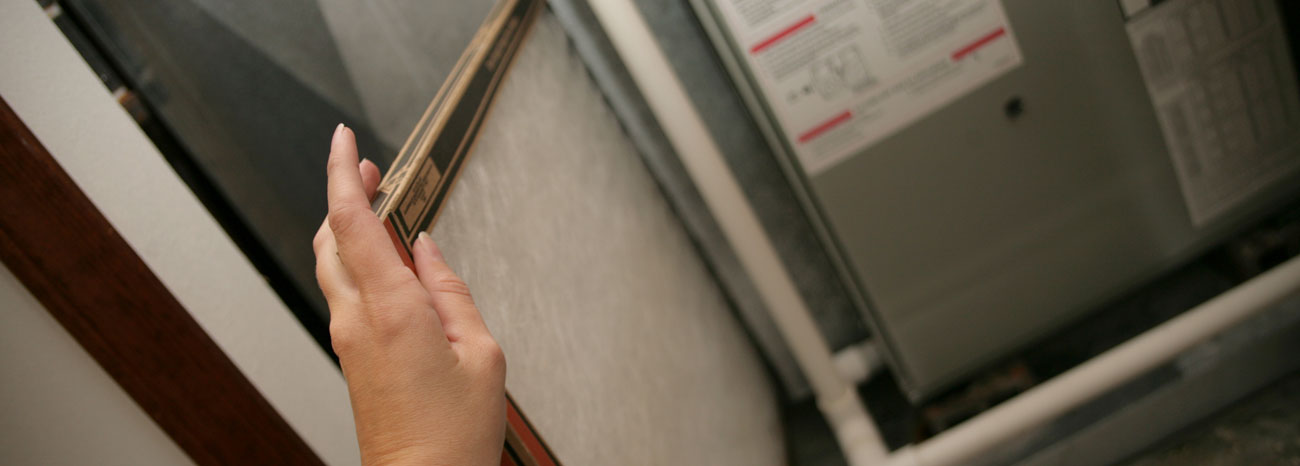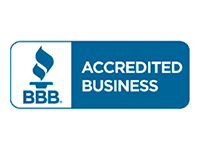Blog

9 Tips for Maintaining Your Oil Heating System
Ensuring the efficiency and longevity of your oil heating system is key to staying warm during colder months without incurring excessive fuel costs. The best way to make this happen is to commit to regular maintenance. In this guide, we will walk you through the top 10 tips for maintaining your oil heating system to help you save money, reduce energy use, and extend the life of your furnace.
 Tip 1: Timely Filter Changes
Tip 1: Timely Filter Changes
The filter in your oil heating system serves an essential function – it screens out dirt and impurities from the oil before it enters your heating system to burn. This filtering process helps ensure that the oil burns more cleanly and efficiently while also preventing the build-up of deposits that can damage your system over time. With a more efficient burn you will use less oil, which can translate into significant savings on your fuel costs.
But filters don’t last forever. Over time, they become clogged and need to be replaced. That’s why it’s a good practice to replace the filter at least once a year. The best time to do this is typically at the start of the heating season or you might choose to change the filter at the same time as your annual heater maintenance. A new filter at the start of winter can help ensure that your system operates at peak efficiency when you need it most.
Two of the things that can impact how often you replace your filter are the quality of the oil you use and how often you run your heating system. If you notice a drop in your system’s efficiency, an increase in fuel consumption, or hear unusual noises, it might be time to change the filter.
Changing the filter is a job that is simple enough to be done yourself. But if you’re not comfortable doing so or if you’re not sure how to do it, don’t hesitate to call a professional. They can change the filter and dispose of the old one safely. If you don’t already have an annual maintenance schedule, this is also a good time for them to inspect your system and perform any other necessary maintenance.
Tip 2: Keep the Area Around the Furnace Clear
Maintaining a clear area around your furnace is not only important for efficiency and proper operation, it’s also a matter of safety. Your furnace needs adequate airflow to operate effectively, and if the surrounding area is cluttered it can obstruct that airflow. This can cause your system to work harder and use more fuel.
Keeping the area clear also prevents the risk of accidental fires. Storing combustible materials like paper, paint, cleaning supplies, or even laundry too close to your furnace can create a fire hazard. Make sure to keep at least a two feet clearance on all sides of your furnace.
The space around your furnace should be neat, well-lit, and easily accessible. This is important for routine maintenance, allowing for the easy detection of any potential issues such as oil leaks or unusual noises from the system. In the case of a malfunction, technicians will also have an easier time diagnosing and fixing any problems if they have unobstructed access to your system.
Keeping your furnace area clean might seem like a minor detail, but it can have a major impact on the efficiency and safety of your heating system. This small step can help ensure that your furnace performs optimally, lasts longer, and operates safely throughout the heating season.
Tip 3: Monitor Fuel Levels
Keeping a vigilant eye on your oil tank’s fuel level is more important than it may initially seem. Running out of fuel in the middle of a cold day can leave you in an uncomfortable situation.
An empty tank could also potentially harm your system. When an oil tank runs dry, it can cause the sediment from the bottom of the tank to be drawn up into the oil lines. This sediment can clog the filter and potentially reach the burner, leading to expensive repairs.
Regularly monitoring your oil levels can prevent these inconvenient and costly issues.
There are several methods to check your oil tank’s fuel level:
- Sight Gauge: Many oil tanks come equipped with a sight gauge, which gives a visual indication of the fuel level. Regularly check this gauge and refill your tank when it drops to around one quarter full.
- Dipstick: If your tank doesn’t have a sight gauge, a dipstick can be used. Ensure the tank is off and then remove the dipstick from the tank, wipe it clean, and dip it back in. The oil should cover at least a quarter of the dipstick.
If you notice that your system seems to be using fuel more rapidly than usual, this could be a sign of a leak or inefficiency in your system. It’s important to contact a professional if you suspect this to be the case.
Tip 4: Regular Cleaning
Keeping your oil heating system clean is the primary way to maintain its health and prolong its lifespan. Over time, dust and grime can accumulate on various parts of your heating system, and this buildup can lead to inefficiency and potential damage.
Cleaning your heating system on your own involves cleaning the external parts and the accessible internal components. It is important to note that while some internal parts can only be safely and effectively cleaned by a professional, there are several things you can do to help maintain your system.
- External Cleaning: Dust and dirt on the outside of your furnace can enter the system and cause problems. Use a clean, dry cloth to regularly wipe down the exterior of your furnace.
- Internal Cleaning – Accessible Areas: If after consulting your heating system’s manual or checking with a professional that you safely clean the accessible internal parts of your heating system, go ahead and start the cleaning process. These areas include the blower compartment, which can often be cleaned using a soft brush and vacuum. Always ensure the system is turned off before attempting to clean the internal area.
- Ventilation System Cleaning: Over time, dust and other particles can accumulate in your heating system’s ductwork. This can lead to reduced air flow, which forces your furnace to work harder and use more energy. Regular duct cleaning is a task often best left to professionals.
- Burner Cleaning: The burner is a critical part of your furnace that should be kept clean for optimal performance. This involves removing soot buildup and is typically a job for a professional during a regular maintenance visit.
In addition to improving efficiency and system longevity, cleaning your heating system on a regular basis can also improve the air quality in your home. So make sure you add this to your regular home maintenance routine.
Tip 5: Check and Maintain the Flue Vent Regularly
The flue vent, or chimney, serves as the exit route for the combustion gasses produced when the oil burns. Because it is vital to the safety, efficiency, and proper functioning of your heating system, regular checks and maintenance are necessary.
- What to Check: Inspect the flue vent for signs of blockages, such as nests or debris. The end of summer is a good time to do this, after a prolonged period of not using your heating system. Blockages can prevent the gasses from exiting, causing them to build up in your home and present the risk of carbon monoxide poisoning. You will also want to look for any visible signs of wear, rust, corrosion, or damage.
- Cleaning: Regular cleaning of the flue vent can prevent the build-up of soot and other combustion residues, which could prevent the escape of dangerous gasses. A professional should perform the cleaning since it requires special tools and knowledge to do it safely and thoroughly.
- Repairing Leaks: If you notice any signs of leaks – such as water around the base of the chimney or stained walls or ceilings in the area around the flue vent – it’s important to arrange for professional repair as soon as possible. Leaks can lead to inefficient operation and potentially hazardous conditions.
- Regular Professional Inspections: Even if you perform regular visual checks of your flue vent, it’s important to have it professionally inspected at least once a year. A professional can thoroughly inspect the interior of the flue vent, identify any hidden issues, and recommend necessary repairs or cleaning.
The flue vent is often overlooked during regular home maintenance, but it plays an essential role in your heating system’s operation. Regular inspection, maintenance, and professional service can prevent the problems that could affect your heating system’s performance and your safety.
Tip 6: Maintain Your Oil Tank
The oil tank is the heart of your heating system, storing the fuel needed to keep your home warm and comfortable. That’s why it’s so important to take good care of your oil tank. Here are some steps to properly maintain your oil tank:
- Routine Visual Inspection: Regularly examine your tank for visible signs of damage, including rust, wet spots, or dents. Pay special attention to the tank’s bottom, as this is where most leaks start. Also, ensure that the tank legs are in good condition and the foundation is stable, as an unstable or leaning tank can cause unnecessary strain and potential leaks.
- Check for Leaks: Oil leaks are not only a waste of resources but also a severe environmental hazard. Monitor your daily or weekly oil consumption and if you notice a sudden increase without a corresponding increase in heating, there might be a leak. Small leaks can quickly become big problems, so if you suspect a problem contact a professional immediately.
- Inspect Vent Alarm and Fill Pipe: The fill pipe is where the oil truck delivers your oil, and during this process the vent pipe releases air pressure. The vent alarm signals when the tank is almost full to prevent overfilling. Make sure these parts are not blocked and are functioning correctly to avoid overfilling or pressurization issues.
- Paint Your Tank: If your oil tank is outside, consider painting it with a reflective, rust-preventing outdoor paint. This can protect your tank from the elements, prevent rust, and help keep the oil cooler, which can improve combustion efficiency.
- Check Fuel Levels: As mentioned in Tip #3, regularly check your oil tank to prevent running out of fuel, as this can cause sediment at the bottom of the tank to be drawn into the system and lead to blockages.
Maintaining your oil tank will contribute to the efficient and safe operation of your heating system. By taking these simple steps, you can help extend the life of your tank, prevent costly leaks, and ensure that your system delivers the heat you need when you need it.
Tip 7: Ensure Efficient Thermostat Operation
Efficient operation of your thermostat can significantly reduce your heating oil consumption, save you money, and maintain a comfortable environment in your home. Here are some strategies to use your thermostat effectively:
- Proper Placement: Install your thermostat in a central place away from drafts, heat sources, and direct sunlight, as these can affect its readings and performance.
- Programmable Thermostats: If you don’t already have one, consider installing a programmable thermostat. You can program it to lower the temperature while you’re out of the house or sleeping and raise it just before you wake or return home. The U.S. Department of Energy estimates you can save up to 10% a year on heating and cooling by simply lowering your thermostat by 7-10°F for 8 hours per day.
- Optimal Temperature Setting: During the winter, set your thermostat to the lowest comfortable setting – ideally between 68-70°F – when you’re home. Lower it by 10-15°F while you’re out of the house or asleep.
- Avoid Large Thermostat Adjustments: Don’t crank up the thermostat to warm your house faster. It doesn’t speed up the heating process and it could result in unnecessary energy usage.
- Regular Maintenance: Your thermostat needs to be maintained regularly, just like any other part of your heating system. Dust and aging can cause it to malfunction, so have it checked by a professional during your annual heating system maintenance.
- Smart Thermostats: Consider upgrading to a smart thermostat, which can learn your schedule and preferences and make energy-saving temperature adjustments automatically. Many models allow you to control the thermostat from your smartphone, giving you the ability to adjust home temperatures from anywhere.
By optimizing your thermostat use, you can maintain comfort while improving the efficiency of your heating system, saving energy and reducing costs. Remember, every degree counts when it comes to heating costs.
Tip 8: Bleeding the System
Bleeding your oil heating system is an essential maintenance task that can help improve its efficiency, removing any air that has found its way into the system. Air in your oil heating system can lead to uneven heating, increased fuel consumption, and even system failure. Here’s how to bleed your heating system:
- Identify the Need: The most common signs that your heating system needs bleeding include unusual noises from the furnace or radiators, uneven heating in different parts of your home, and higher than normal oil consumption.
- Safety First: Before you start, make sure the heating system is off. It’s safer to perform the bleeding process when system components are cool enough to prevent burns.
- Locate the Bleeder Valve: The bleeder valve is typically located on the furnace but its location can vary depending on the model. Check your owner’s manual if you’re unsure.
- Prepare a Container: Position a small container under the bleeder valve to catch any oil that comes out. It’s also a good idea to have some rags or paper towels handy to clean up spills.
- Open the Bleeder Valve: Using a wrench or screwdriver, slowly turn the valve counterclockwise to open it. You should notice a mixture of oil and air coming out.
- Wait for the Air to Bleed Out: Once you’ve opened the bleeder valve, wait until the air has been released and a steady stream of oil is coming out. This indicates that the air has been successfully removed.
- Close the Bleeder Valve: Once the air has been bled out, close the bleeder valve by turning it clockwise.
- Clean Up and Check: Clean up any spilled oil and then restart your heating system. Check to see if the symptoms of air in the system have been resolved.
While bleeding your oil heating system is something many homeowners can do themselves, if you’re not comfortable doing it or if bleeding the system doesn’t resolve the issue, you should call a professional. Bleeding the system is a standard part of professional maintenance service, and regular maintenance can help prevent air from getting into the system in the first place.
Tip 9: Regular Professional Inspections
Yes, there are tasks you can DIY but the complexity of oil heating systems calls for annual professional inspections. A qualified technician will check all components, including the heat exchanger, flue pipe, and burner for wear and tear and ensure everything is in working order. They can identify potential problems early, which can save you money and prevent more significant issues down the line.
Is it time for your annual oil heating system check-up? Contact our team of professionals today to schedule an inspection or maintenance session. If you found this guide useful, share it with others who might also benefit.
Have Questions?
Contact us and we will be happy to answer any questions. Call 215.799.2019 or click the button below.
Promotions Sign Up
Sign up below if you would like to receive occasional promotional offers and tips.















